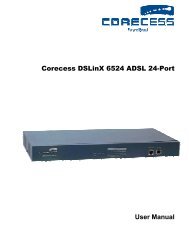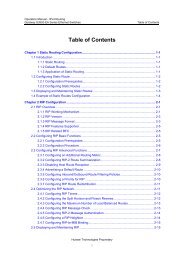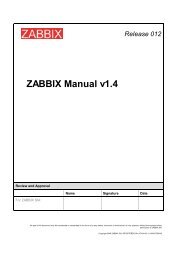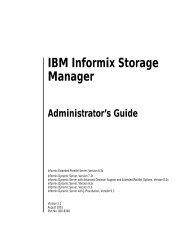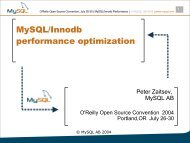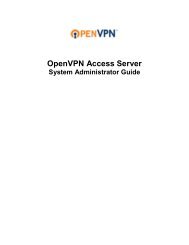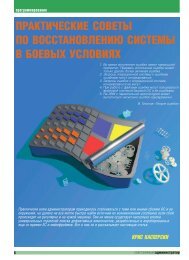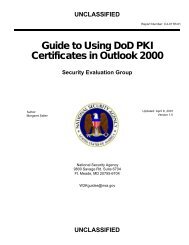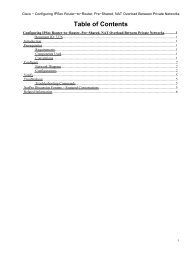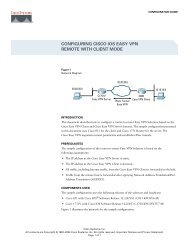Solaris Application Programming, 1/e - Chapter 4 - Parent Directory
Solaris Application Programming, 1/e - Chapter 4 - Parent Directory
Solaris Application Programming, 1/e - Chapter 4 - Parent Directory
Create successful ePaper yourself
Turn your PDF publications into a flip-book with our unique Google optimized e-Paper software.
52 <strong>Chapter</strong> 4 Informational Tools<br />
$ psradm -i 1<br />
$<br />
Example 4.4 Excluding a CPU from Interrupt Handling<br />
4.2.4 Controlling the Use of Processors through Processor Sets or<br />
Binding (psrset and pbind)<br />
It is possible to configure systems so that the processors are kept in discrete sets.<br />
This will partition compute resources so that particular applications run on particular<br />
sets of processors. The command to do this is psrset, and it is available only<br />
with superuser permissions. Example 4.5 illustrates the use of processor sets.<br />
Example 4.5 Example of the psrset Command<br />
# psrset -c 1<br />
created processor set 1<br />
processor 1: was not assigned, now 1<br />
# psrset<br />
user processor set 1: processor 1<br />
# psrset -e 1 sleep 1<br />
# psrset -d 1<br />
removed processor set 1<br />
The code in Example 4.5 first shows the creation of a processor set using the<br />
psrset -c option, which takes a list of processor IDs and binds those processors<br />
into a set. The command returns the id of the set that has just been created. The<br />
command psrset with no options reports the processor sets that are currently in<br />
existence, and the processors that belong to those sets. It is possible to run a particular<br />
process on a given set using the psrset -e option, which takes both the<br />
processor set to use and the command to execute on that set. Finally, the psrset<br />
-d option deletes the processor set that is specified.<br />
You must be careful when using processor sets (or any partitioning of the processor<br />
resources). Using processor sets, it is possible to introduce load imbalance,<br />
in which a set of processors is oversubscribed while another set is idle. You need to<br />
consider the allocation of processors to sets at the level of the entire machine,<br />
which is why the command requires superuser privileges.<br />
It is a good practice to check for both the number of enabled virtual processors<br />
(using psrinfo) and the existence of processor sets whenever the system’s performance<br />
is being investigated. On systems where processor sets are used regularly,<br />
or processors are often switched off, they can be a common reason for the system<br />
not providing the expected performance.



